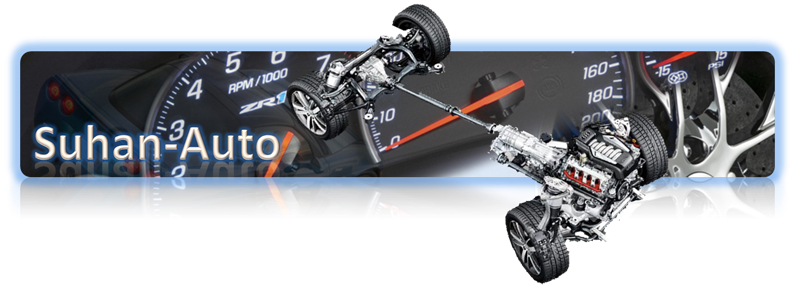 Sectional view of the Volkswagen Group dual clutch Direct-Shift Gearbox (DSG) transmission
Sectional view of the Volkswagen Group dual clutch Direct-Shift Gearbox (DSG) transmissionIMG Ref: http://en.wikipedia.org/wiki/File:VW_DSG_transmission_DTMB.jpg
The revolutionary direct shift gearbox (DSG) combines the advantages of a conventional six-speed manual-shift gearbox with the qualities possessed by a modern automatic transmission. The driver enjoys immense agility and driving pleasure with, at the same time, smooth, dynamic acceleration with no interruption to the power flow.
Clutch Types
There are TWO fundamental types of clutches utilised in dual clutch transmissions: either two wet multi-plate clutches which are bathed in oil (for cooling), or two dry single-plate clutches. The wet clutch design is generally used for higher torque engines which can generate 350 newton metres (258 ft·lbf) and more (the wet multi-plate clutch DCT in the Bugatti Veyron is designed to cope with 1,250 N·m (922 ft·lbf)), whereas the dry clutch design is generally suitable for smaller vehicles with lower torque outputs up to 250 N·m (184 ft·lbf). However, whilst the dry clutch variants may be limited in torque compared to their wet clutch counterparts, the dry clutch variants offer an increase in fuel efficiency, due to the lack of pumping losses of the transmission fluid in the clutch housing.
Clutch Installation
There are now three variations of clutch installation. The original design used a concentric arrangement, where both clutches shared the same plane when viewed perpendicularly from the transmission input shaft, along the same centre line as the engine crankshaft; when viewed head-on along the length of the input shaft, this makes one clutch noticeably larger than the other.
The second implementation utilized two single-plate dry clutches which are side-by-side from the perpendicular view, but again sharing the centre line of the crankshaft.
A latest variation uses two separate but identical sized clutches; these are arranged side-by-side when viewed head-on (along the length of the input shaft and crankshaft centre line), and also share the same plane when viewed perpendicularly. This latter clutch arrangement (unlike the other two variations) is driven via a gear from the engine crankshaft.
The driver can operate the DSG manually or allow changes to take place automatically. In the automatic mode there is a choice between the well-balanced, comfortable standard shift settings and a program with greater sports emphasis. Manual shifts are made either at the gear lever or at shift paddles behind the steering wheel.
Reference:
http://en.wikipedia.org
Audi Glossary











